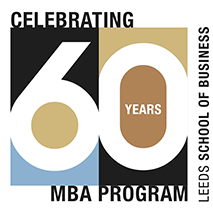Leeds Business Insights Season 1 Episode #3
S1E3: Sarah Zechman - Unpacking SPACs
[00:00:00] Amanda: Welcome to the Leeds Business Insights Podcast, featuring expert analysis to help you stand out from the herd. My name is Amanda Kramer. We are thrilled to be talking about SPACs today with Sarah Zechman. Sarah is a Leeds School of Business professor, Tyson faculty fellow, and Division Chair of Accounting. Sarah has been with CU since 2015. Prior to her time at CU, Sarah spent seven years as a professor at the University of Chicago. She spent five years in the industry and earned her Ph.D. from Wharton. If you've been reading the finance pages or keeping an eye on the Wall Street Journal, you've probably heard of SPACs or Special Purpose Acquisition Companies. Also called blank check companies, SPACs are shell companies that exist to merge with a private company. Despite the dearth of disclosures required of SPACs, they're still drawing investor attention. Why is it that? Is it that we're seeing more athletes get involved in this space, or is it something in those limited disclosures themselves? Welcome, Sarah.
[00:01:07] Sarah: Thank you very much for having me. It's a pleasure to be here.
[00:01:09] Amanda: Now, Sarah, before we dive into this conversation, can you help ground us in understanding what are SPACs?
[00:01:17] Sarah: SPACs are a pretty interesting animal, actually. Essentially, before the IPO, a SPAC is nothing more than a small group of people that want to raise money for a future acquisition or merger. You know, it's usually a group of sponsors, four to ten individuals, comprised of managers, directors, maybe, a special advisor or so. And they've got a plan in place, a couple of industries that they're interested in. Although they are in no way beholden to those industries, if they find a target anywhere, they can seek that target. But, essentially, what they want to do is take a private company. Merge with them. Take them public. And there is a fixed time period under which they need to do this. So, usually, it's two years. It might be shorter. Sometimes you see 18 months. But basically, at the point they go and undergo an IPO, they have almost nothing. There are no operations. There are nominal assets and liabilities. There's a vague plan for what they'd like to do, but they're not constrained by it, other than the timeframe. And then they go and they undergo an IPO like any other private company would. There are underwriters. They have to file a prospectus with the SCC.
Then they raise a couple of differences. One is that almost all SPACs IPO at $10 per unit. So, the fixed price is fairly unusual, and the fact that they are selling units, which is a share plus a fractional warrant, that's also fairly unusual. So, variation comes from how many units they're selling and what fraction of a warrant they are pairing with their shares. So, when they go through the IPO, the sponsor team, instead of taking salaries, usually takes a 20% share. There's an immediate dilation. And the remaining goes to the shareholders, with all the cash raised in the IPO going into a trust, other than the small amounts required to cover underwriter fees and nominal operating costs.
So, I guess the other component is what happens after. You know, do they find a target? Do they not find a target? So, if they do not find a target that and they run it into their timeline, they run up against the endpoint, they simply return the cash sitting in the trust in a prorated amount to all of those investors. If they do find a target, that's where things get somewhat interesting. And they have to disclose this in a press release in an 8-K. They have to file a proxy with the SCC. And so, all of this is how the shareholders learn about the target. Then the shareholders vote. If the shareholders don't approve, the deal doesn't go through. If the shareholders do approve, then the deal goes through. The target gets the money from the SPAC. Usually, there are some private funds that are also raised through a pipe, usually a similar amount to what the SPAC puts in. And then any remaining ownership stays with those private owners from the former company. So, going forward, we've got a publicly-traded firm that is comprised of the formerly private operations and firm.
[00:04:37] Amanda: So, Sarah, in your response just now, you mentioned warrants. Can you tell us more about what a warrant is?
[00:04:44] Sarah: Sure. So, a warrant simply gives the holder of the warrant a right to buy a share at a future point in time at a fixed price. So, if we're talking fractional warrants, then you need so many fractional warrants to add up to the right to buy a share. So, after a merger or acquisition occurs, there's usually a set timeframe under which the holders of these warrants have the opportunity to exercise them and get additional shares in exchange for a fixed price.
[00:05:13] Amanda: Thank you very much for that comprehensive description of what SPAC is to help ground us as we move forward in the conversation. And, as we think about a SPAC versus alternative options, what are current conditions that are making investment in SPACs an alternative option to IPOs?
[00:05:32] Sarah: This is a great question. There’s a number of possible explanations, none of which are probably the correct answer or the only answer. You know, people at this point are looking for alternative investments. I've seen a lot of creative investments out there, and SPACs are one of them that are a bit different. It's difficult to obtain stakes in a traditional IPO. Even those entities that have access are often constrained in their allotment. If you want to invest in an early-stage investment, there’s very limited options for many entities and individuals. I've heard these described as a poor man's or a poor person's private equity or venture capital. But SPACs, they expand the pool of investment opportunities available. There is a recent study that provides some evidence that SPAC interest increases when there is less market uncertainty and less risk aversion among investors. So, that's also something that may be underlying the trend. But it looked like SPACs were going to ramp up before the financial crisis. But of course, then we hit the financial crisis, and they crashed, like so many other ways of raising capital. So, who knows what might've happened had we not had our financial crisis? But ultimately, there's no definitive answer of how we ended up where we are.
[00:06:47] Amanda: It’s helpful to understand the context in terms of the reasoning why there's no definitive answer. And this leads well into the next question. You've mentioned that there are a lot of headlines around SPACs, but not a lot of understanding around them. And yet people are giving their money to SPACs readily and willingly. Tell us more about this.
[00:07:10] Sarah: Yeah. So, obviously, the SEC has had some concerns recently, and they have put out a few alerts and bulletins, raising a few issues on why SPACs are a bit different than other investment opportunities. And the two concerns that the SEC has voiced out is, one is just they simply have greater incentive misalignment. If you think about the sponsor team, they have a 20% interest in these entities. If they don't find a target, they end up with nothing. They only get something as long as the deal is done. Whereas, our shareholders who've bought into this, they've put $10 in. And so, for them, a good deal is something that exceeds that $10 and returns their capital. And so, we have some real incentive misalignment here.
There’s also concern that we have a lot of athletes, musicians, and politicians. There's concern that less sophisticated investors may be misled by this. But ultimately, SPACs, they're different from what we have seen before. And in a way, they're more like private equity than an IPO. And that you're giving your money to a group of individuals and trusting them to make a good decision. And where they're very unique is that they're both incredibly risky and incredibly safe investments, which is part of their complexity. Up until the merger or acquisition, they're actually a terribly safe place to put your money. They rarely lose value because there's nothing but a pile of cash sitting in a safe trust. Behind that underlies your stock. If a deal is proposed, shareholders get to vote and approve the deal, which is a fail-safe. And then, even if a deal is approved and a shareholder doesn't want to engage in the deal, they still have two options. They can either sell their share to the market, which is usually trading at least $10, often higher once the deal is announced. Or they are allowed to return their share and get their pro rata amount of cash out of the trust. They have lots of exit opportunities. And so, their downside is capped at $10.
Where the risks kick in is after the deal goes through, after the merger or acquisition occurs. Studies have shown that these, on average, simply don't perform as well as traditional IPOs and other investments. The incentive misalignment suggests that the management team, especially as they approach their two-year window, may be just looking to do any deal. If investors are less sophisticated, did they miss some of the signals that suggest maybe this isn't the best opportunity? And, it's very high dilution. Immediately, 20% goes to the sponsor team. You have warrants which provide some upside potential, but again, they come with dilutions since all the units come with similar warrants. Depending on where you are in the timeline, understanding these different aspects is very important.
[00:10:01] Amanda: Now that we've learned a little bit more about what a SPAC is, I think it's important to dive into the history of SPACs and help us understand some of the basic components of a SPAC.
[00:10:17] Sarah: The first SPAC was actually back in the 1990s. Although, I think a very few people probably know that. And they were extremely infrequent until 2003. And even 2003 to 2017, there was maybe an average of 20 a year. So, still very infrequent, but they were still raising about 3 billion a year in this 20. And then obviously, since then in 2018 and ramping up in 2019 and certainly in 2020, they've exploded quite a bit. In 2020, there were, you know, over 200 SPACs that raised over $70 million. They average over 300 million each. There were more of them than traditional IPOs in 2020. And they're on pace to far exceed that in 2021. There was a little bit of a decline for a while where they had to figure out some accounting issues that the SEC raised, but we've already exceeded in 2021, certainly where we were in 2020. And again, these are just empty boxes. When they go for the IPO, it is a team of four to 10 people who have a vague plan of a company they would like to merge with or acquire. And they're just hoping to raise some cash and be able to do a deal in the future. It's nothing more than that. It's really very simple.
[00:11:35] Amanda: It's an idea, essentially.
[00:11:38] Sarah: It is exactly that. It is an idea, but it's not even a concrete idea. And it has a very fixed timeline. You know, at some point, it expires.
[00:11:46] Amanda: And at that point, if it expires, can you recap once again what happens to your money at that point if it expires and nothing has transpired?
[00:11:55] Sarah: Sure. If we hit our two-year time limit, the pile of cash that is sitting in our trust just gets returned to all those shareholders pro rata. So, essentially, they're pretty close to the $10 they put in, because other than paying some underwriter fees and nominal operating expenses, the trust is protected.
[00:12:16] Amanda: So, as we think about considerations for investing in SPACs, what are there other factors that matter when people consider giving to SPACs? For example, the characteristics of the management team, celebrity affiliation, etc.?
[00:12:31] Sarah: This is exactly what the current study I'm working on is looking at, the series of studies that are already looking at SPACs focused on what happens after the deal. How do they perform in the market? How do they perform relative to alternative investments? And so, my two co-authors tonight, Andrea Pawliczek, who's also a faculty here at Leeds, and Nikki Skinner, both of whom are former Leeds Ph.D. students, we're looking at backing up the timeline, and what is it that is leading investors to give their money to SPACs? Given, there's really nothing other than a sponsor team and a vague plan.
And so, when you think about what information investors have, it's pretty limited. They have the biographies on the individuals of the sponsor team. And they have what may or may not be considered limited, but they have the prospectus. And so, the reason it's not limited is this is a huge document. It averages 160,000 words. But at the same time, there's not much underlying it. There's not much information behind it. There’s no operations, there are very few assets or liabilities that exist behind this company. And so, what we're interested in is what is it about the sponsor team? What is it about this extensive disclosure document associated with the amount of capital a SPAC can raise?
And again, as a reminder, we're talking about correlation, not causation here. We don't know what causes it, but we know what's correlated with investors giving more or less money to SPACs. And so, I know some of our findings at this point are, I think, as you would expect. And some of it is maybe a little surprising. On the sponsor team side, we find that, if you have someone on your sponsor team, at least one person, who has experience with a SPAC already, who's already had a SPAC successfully IPO, that matters. That's important. Having someone on your sponsor team who is a former CEO, who has run a company, that seems important. And maybe that's a little surprising, it's not clear that your typical CEO duties overlap with going out in the market and trying to find a private company to acquire, but it seems to matter.
And the third aspect of your sponsor team is having a celebrity. That also seems to matter. Consistent with the SECs concerns that, maybe, the celebrities are influencing individuals and not based on fundamentals of important features that we think of as related to future cash flows. On the disclosure side, you may wonder whether or not a discussion about what may or may not happen in the future has any credibility or information. But we do find that what these companies are saying in their S-1 filing or their prospectus does seem to be associated with the amount of capital raised. I am talking more about the future, using less negative and less uncertain language. This is associated with more funds raised. It’s being talked about. In other words, what section? They're all created equally. For example, the proposed business section, which talks about what they would like to do with the money, what kind of acquisition they would like to engage in. The more you say, the more money you seem to raise. More is better there. On the other hand, totally different, in the risk factor section, it's all about how much negative language you use about risks and how much uncertain language you use about risks. That's what matters when you're talking about your risks for your entity.
[00:16:04] Amanda: Tell us a little bit more about why disclosure language matters.
[00:16:08] Sarah: You know, not all disclosures equal, but it does seem to be important. And the other finding we have is that there does seem to be an interactive effect. That when a SPAC has a sponsor or someone on the sponsor team who has relevant experience, think about someone who's already been on a SPAC, that, investors appear to rely more on their disclosure and be less negatively persuaded by litigious and uncertain language than if they don't have someone with relevant experience. We definitely don't find the same interactive effect for SPACs that do not have someone with that type of relevant experience.
[00:16:40] Amanda: So, for a business that wants to go public, why would a business consider a SPAC rather than going public?
[00:16:50] Sarah: There are a lot of advantages, it turns out, for a private company. Their incentives are actually pretty clear in these instances. Relative to a traditional IPO, being acquired or merging with a SPAC is a much faster process. It's much less costly as far as time, as far as money. And you still end up with publicly traded shares. There is much less uncertainty about the pricing because they're able to talk about it ahead of time and they're not at the risk of market conditions, such as in a traditional IPO.
And the other advantage that I have heard individuals at private firms discuss is the fact that they are better able to tell their story. That part of the constraints in the IPO has to do with restrictions on disclosure and exemptions from disclosure protections and litigation protections. And so, by going public through a merger or an acquisition rather than through an IPO has been perceived as an advantage, in that they can really talk more about their company and their operations. Now, there’s some uncertainty as to whether this is a temporary advantage that may not continue in light of the recent disclosure recommendations that an SEC advisory committee provide about increasing disclosure and clarity of disclosures around SPACs, both at the IPO and also at the subsequent business combination. And so, to the extent that there are elevated disclosure requirements, this may not be the benefit that it currently is perceived. Still, it’s certainly something that private companies seem to value.
[00:18:35] Amanda: Sarah, you have mentioned before that SPACs are complex because they're low-risk and insanely risky, which is an interesting contradiction. Can you tell us more about what you meant by that?
[00:18:49] Sarah: It depends on when you get in and the circumstances of when you get into this investment. If you get in early, you have almost $10 of cash sitting protected in the trust, which you can get back. If you don't like any deal that is proposed, you can vote against it. But even if it goes through, you can still redeem—give back your shares and redeem your prorated portion of the cash. Or, usually, you're better off just selling your share to the market.
Now, the closer you get to the deal, the more we see price deviating from the $10. And while most of these shares are trading up above $10, up even through the announcement, we do see them somewhat start to reverse and decline a bit as we get closer to the merger. And then, if you hold through the merger, that's where we see these investments not performing, as well as some alternative investment opportunities on average.
[00:19:47] Amanda: As we think about our LBIdea, final takeaway, I think the main takeaway here is that these are incredibly complex products for retail investors. What should investors keep in mind when they're thinking about investing in a little-known product, whether it's a SPAC or something that comes next?
[00:20:07] Sarah: So, a little bit of clarification here. One is that retail investors can actually get in on the IPO. Those are for institutions. But obviously, retail investors are absolutely buying into these once they start trading on the open market, post-IPO. And you know, understanding, certainly understanding, the nuances of where investors are putting their money is essential. Understanding where the risks lie and what those risks are is crucial. And in the case of SPACs, clearly, it changes what the risks are. Where they lie changes throughout the life of this SPAC. You know, as we talked about earlier, at some points, they’re relatively safe investments. At other points, they're very risky investments. And so, clearly understanding this, as with any investment opportunity, is important.
[00:20:50] Amanda: Thank you so much, Sarah, for sharing all of this cutting-edge information about SPACs. It’s been really informative.
[00:20:56] Sarah: Thanks so much for having me, Amanda. This has been fun.
[00:21:02] Amanda: Thank you again for listening to Leeds Business Insight, and a special thank you to my guest, Sarah Zechman. To our listeners, if you're feeling grateful for these insights, please leave a review to help other listeners find us. And if you're not already a subscriber, please subscribe, so you don't miss an episode. We'll see you next time.
The Leeds Business Insights podcast offers a cutting-edge perspective of trending topics, along with actionable insights from faculty, alumni and global leaders, to help you navigate the evolving world of business.
We invite you to subscribe wherever you get your podcasts, read about our latest episodes or listen to the most recent podcast below.







